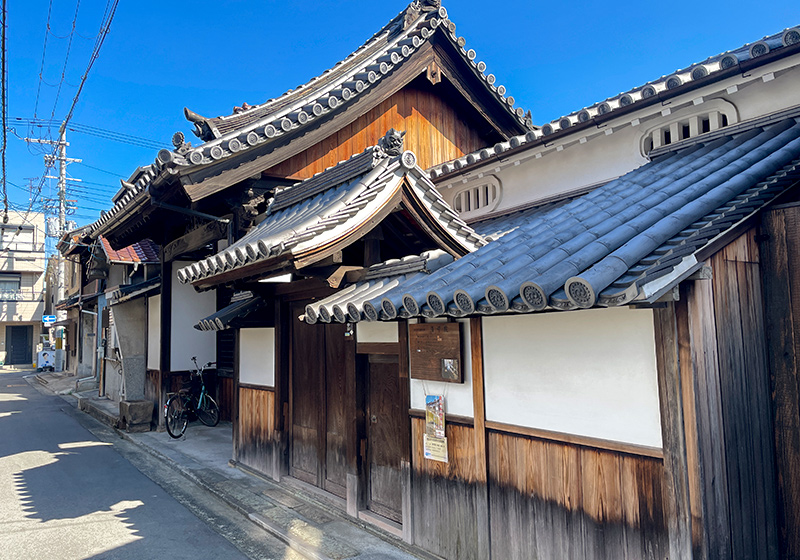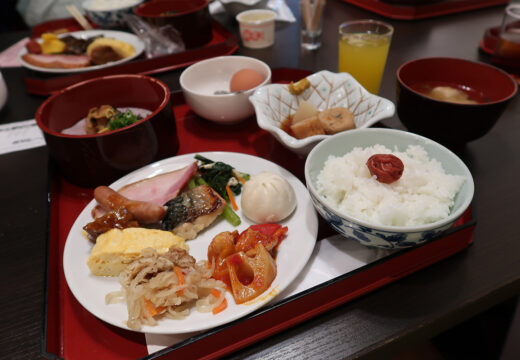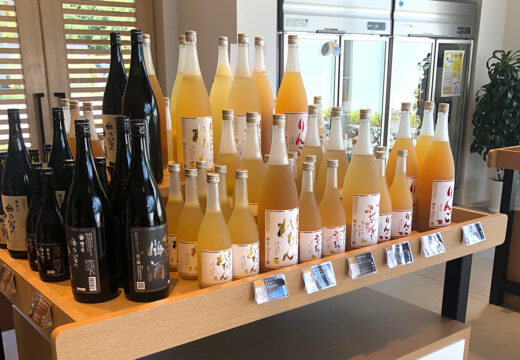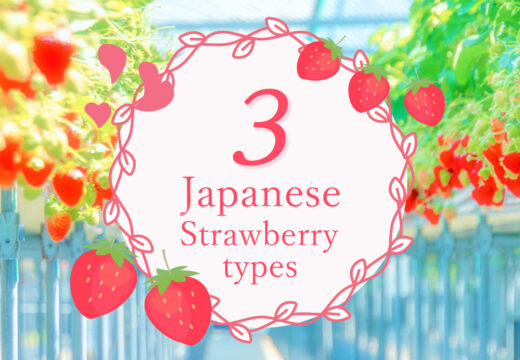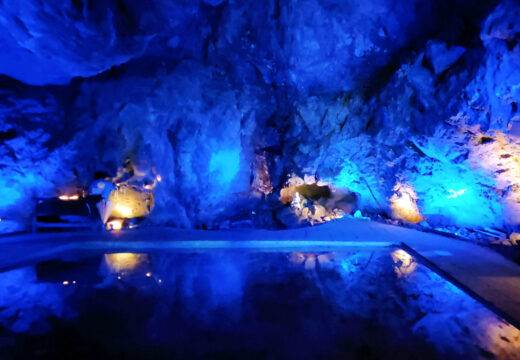Experience the history and manufacturing process of Hinawaju – Sakai City, Osaka
Category: blog

“Sakai City” in Osaka Prefecture was once a major producer of Hinawaju.
(A firearm used in the Edo period is called a “Hinawaju” in Japan.)
Furthermore, Sakai is home to the only remaining Edo period gunsmith house in Japan, which has emerged as a new tourist attraction.
Today, I would like to introduce the extremely valuable gunsmith residence (Machiya Historical Museum, Inoue Sekiemon Family Residence).
It is a must-see for history buffs, especially those who love the Warring States period.
The only Hinawaju blacksmith house remaining from the Edo period in Japan
The nearest station to Teppo Kajiyashiki is Shichido Station on the Nankai Main Line.
It is a minor station in Osaka Prefecture, with only a limited number of trains stopping at each station. However, there is a residential area and a shopping center, and the station is crowded with people on weekends.
The name of the town around here is Teppo, which means gun in Japanese. I can’t believe that Teppo is used in the name of the town, it gives me a sense of history.
Kajiyashiki is located in a residential area. It is a Japanese house with an air of elegance.
This is the oldest town house that was rebuilt after the battle of “Osaka no jin” (Osaka no jin).
It is said that a Hinawaju blacksmith named Inoue Sekiemon lived here for generations.
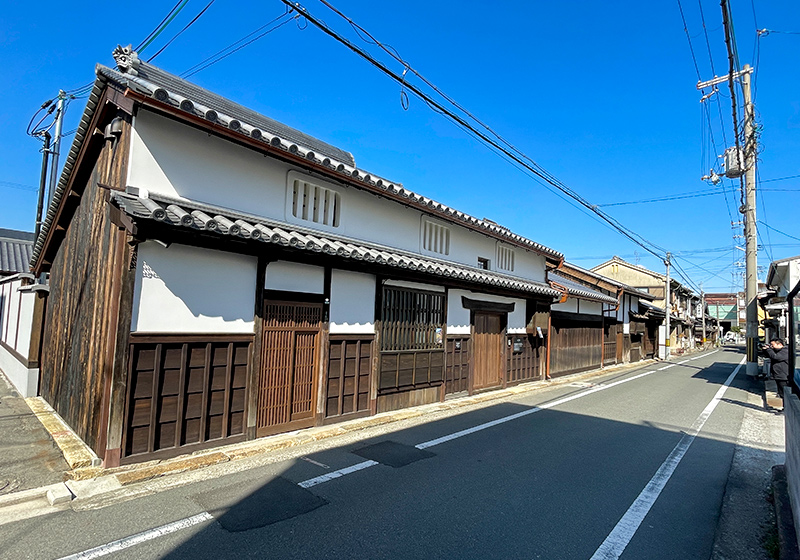
In the late Edo period in Japan, there were many Hinawaju smiths in Sakai City, and they traded with people all over Japan. And among them, a craftsman named Inoue-san was the representative Hinawaju craftsman of Sakai City.
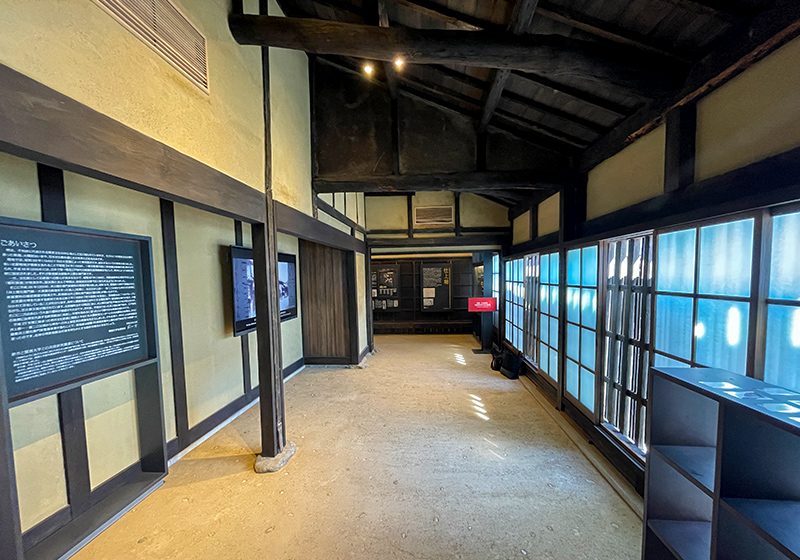
Now, I walk in the front door. On the left was the reception area. On the right was a spacious place to finish Hinawaju.
According to the staff, “Hinawaju Kajiyashiki” has three unique spaces that are different from regular townhouses.
1. Shiageba, where parts are assembled to complete guns
2.Mise no ma negotiates business deals for guns.
3.Kajiba, where iron is forged to make gun barrels.
In other words, craftsmen used to assemble Hinawaju here.
In Shiageba, there is a prologue theater showing historical images of Sakai and guns, and a museum store selling original goods from this blacksmith house.

In the back of Shiageba I found a display of disassembled Hinawaju!
Hinawaju in Sakai were manufactured with the gunsmiths who made the gun barrels as the leaders, and each component was manufactured by a division of labor with craftsmen located around the compound.
Sakai City was burnt to the ground in the battle of Osaka, and was rebuilt in the Edo period (1603-1868). At that time, blacksmith shops that handled fire were concentrated at a distance from the center of the city. This was because fire was considered a terrible calamity by the people of that time.
Reading about the “gun business” in old Japan from valuable documents
I now went to “Mise no ma”. There are many exhibits that give a complete picture of the guns business during the Edo period.
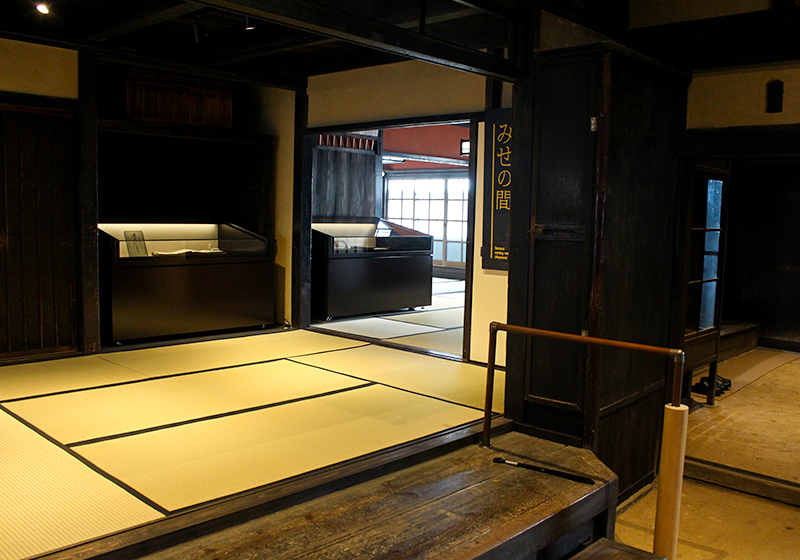
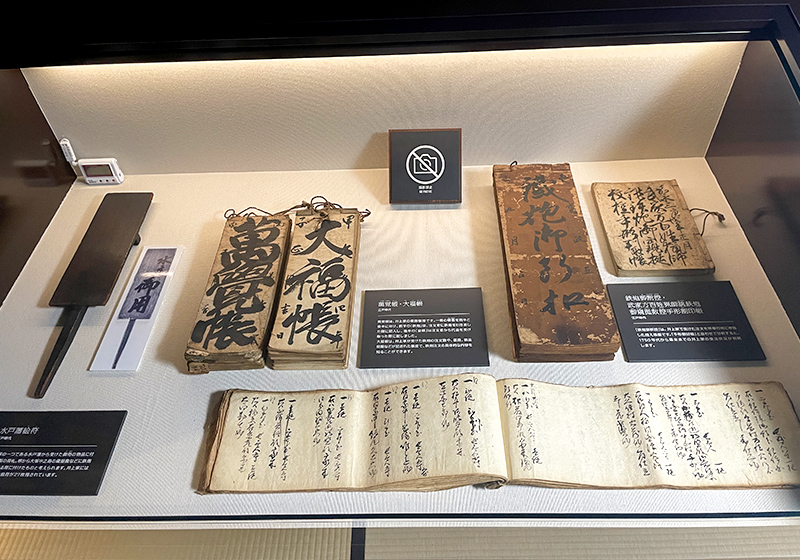
On display are a variety of valuable materials, including documents showing correspondence between the Inoue family and the metal fittings and mold makers who manufactured Hinawaju together with the Inoue family, as well as account books showing the number of orders, prices, delivery deadlines, etc. for Hinawaju commissioned by the Inoue family.
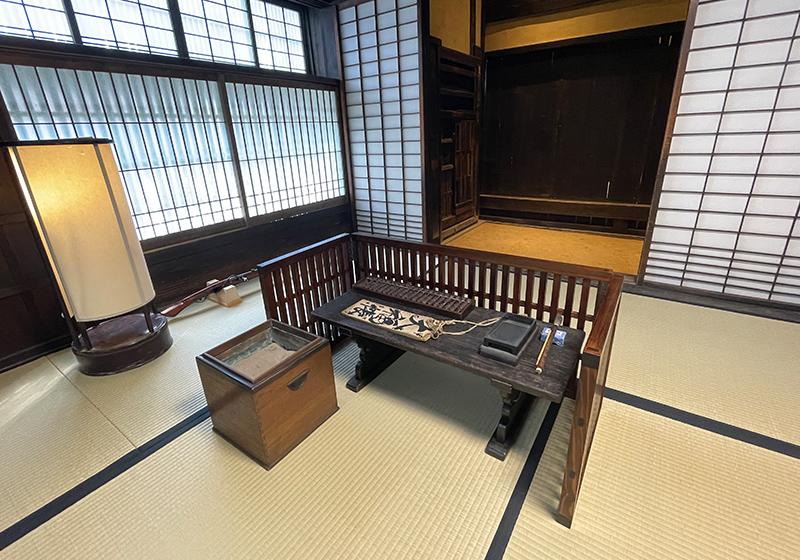
This is a reproduction of how business was conducted in those days.
On the desk is an abacus, an inkstone and a brush. It is nice to sit here and enjoy the feeling of people in the old days.
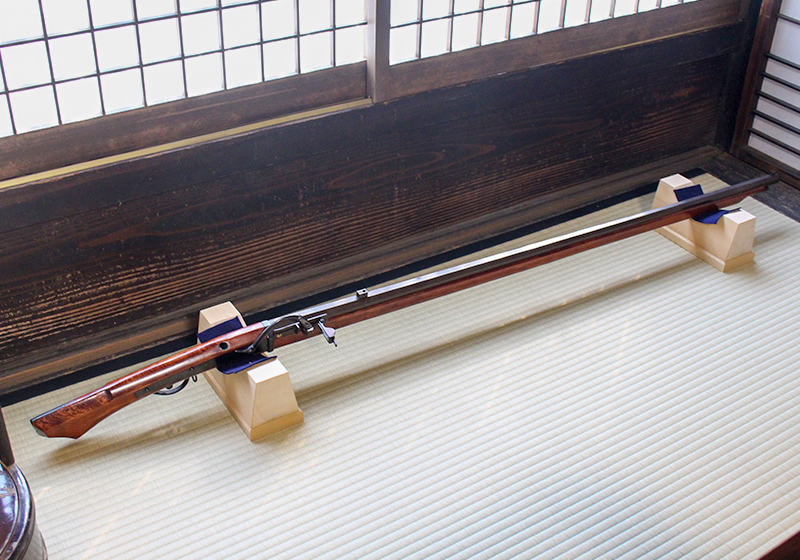
In this day and age, it is a rare experience to be able to hold a firearm!
I took the opportunity to hold it, and it was heavier than I had expected.
It is made of iron rods, so it is natural, but people in the past used to go to the battlefield with such heavy things.
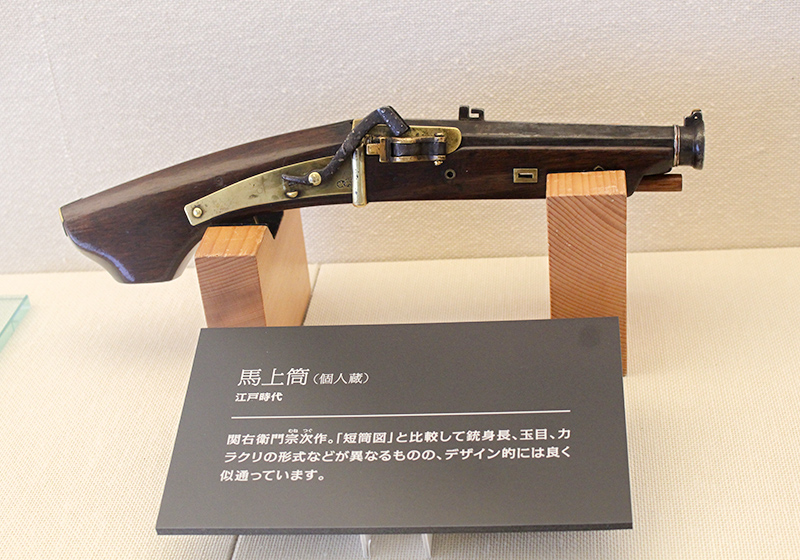
A “馬上筒(Bajyo-tsutsu),” a firearm similar to today’s pistol, was also on display!
The kanji “馬” means horse.In other words, it is a Hinawaju that can be handled while riding a horse.
Let’s visit an Edo-era blacksmith shop.
Next, I went to the blacksmith shop.
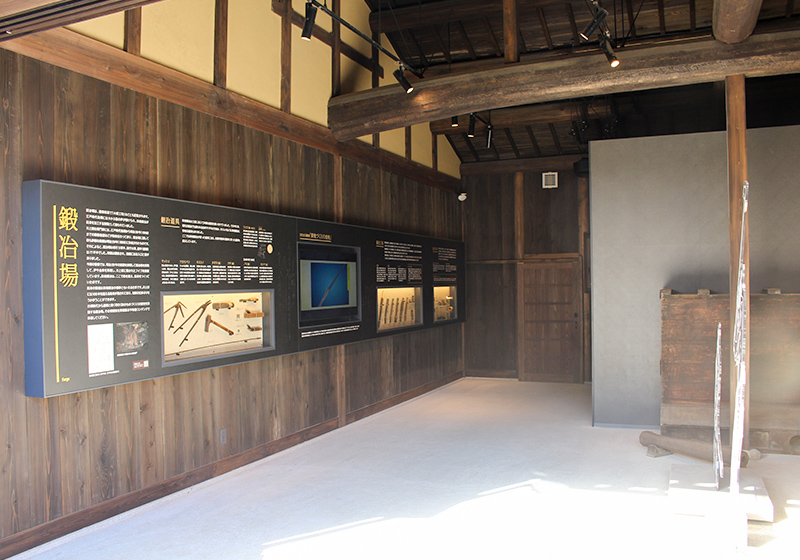
This forge was recreated based on materials handed down in the Inoue family.
The CG animation on the monitor shows how the iron was wound around the barrel of the gun. You can learn about the gunsmithing techniques of the time.
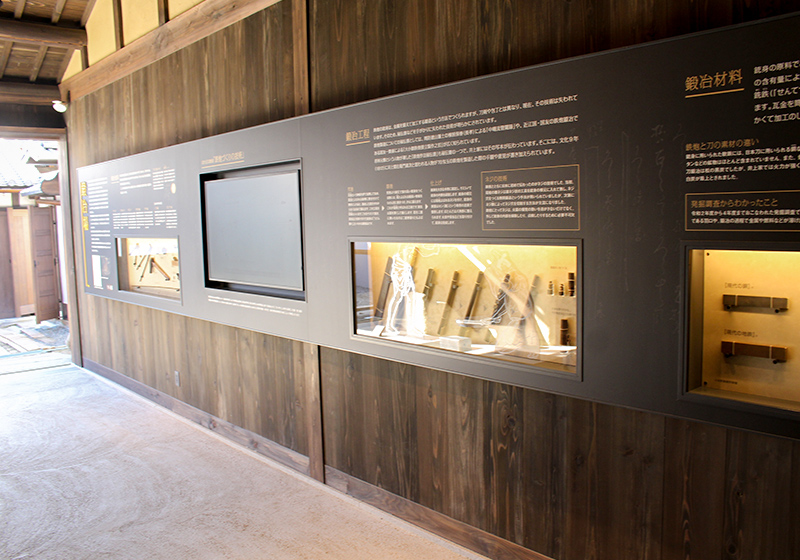
Then there is a space where visitors can experience the work of craftsmen.

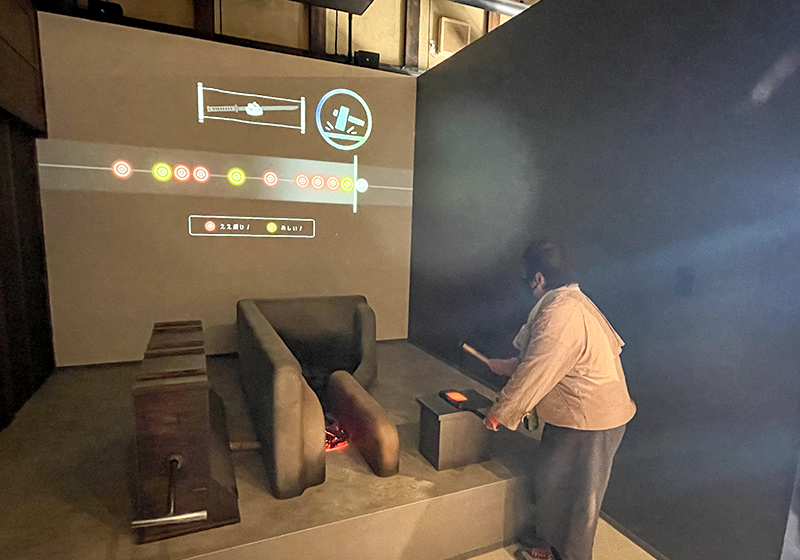
Japanese Houses of the Edo Period for Foreigners to Enjoy
A blacksmith’s mansion that has been in existence since the Edo period. Of course, the building itself is also valuable.
It is designated as a tangible cultural property of Sakai City.
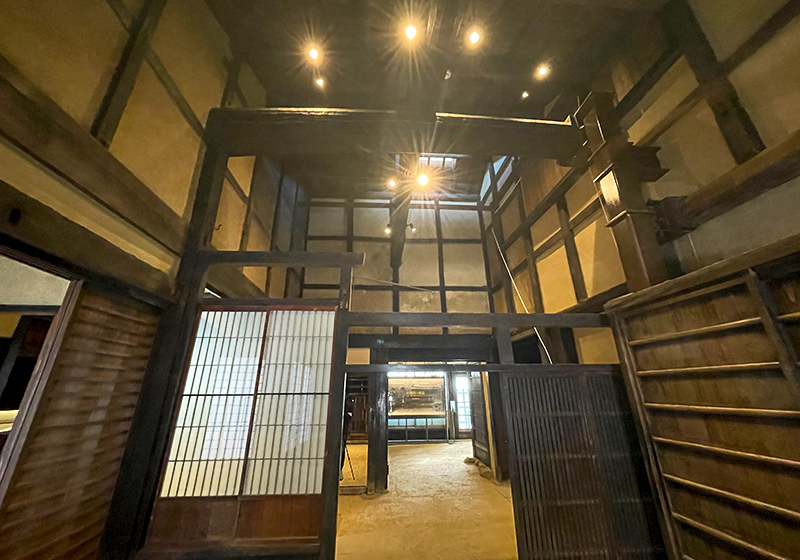
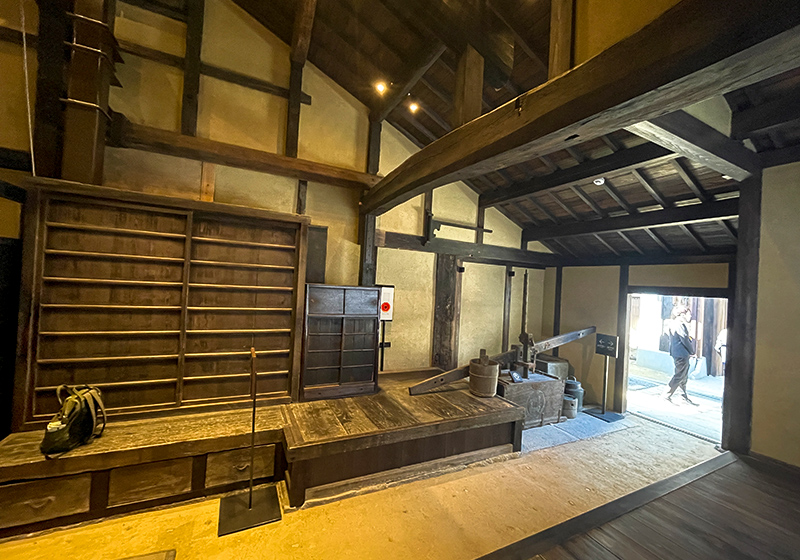
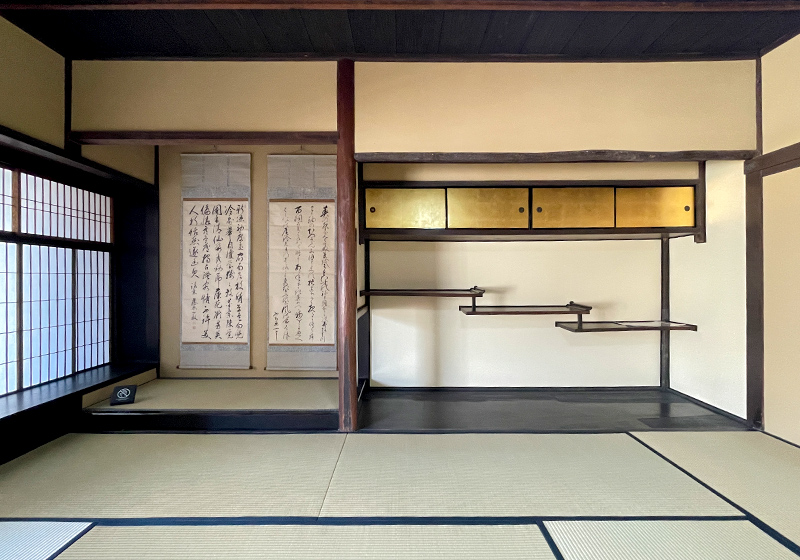

The Japanese-style rooms and garden are beautifully maintained, and I wonder how they have survived to the present day.
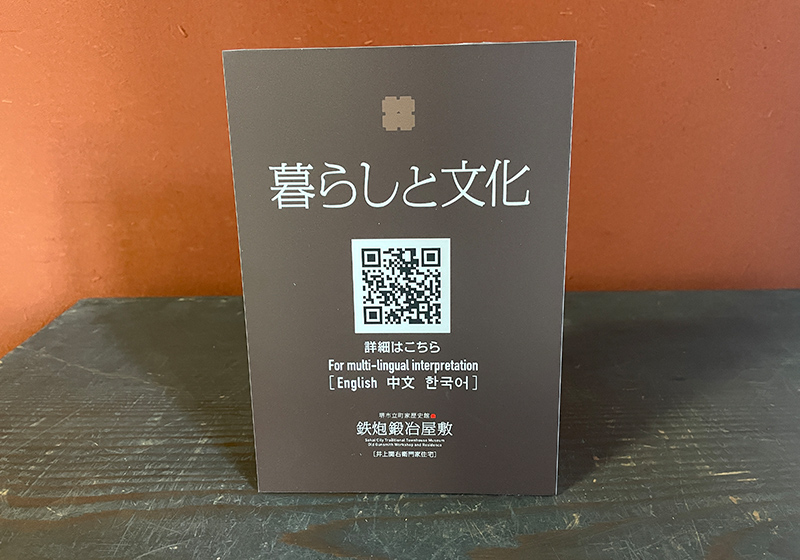
Why you should visit this Hinawaju blacksmith house
The staff gave us two highlights of the value of this mansion.
Sakai was a major producer of Hinawaju because of its excellent blacksmithing techniques!
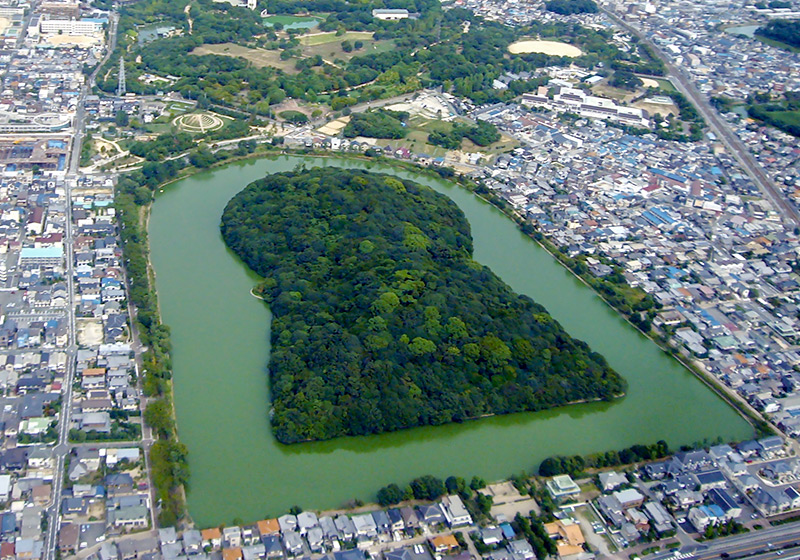
Craftsmen who made iron tools such as hoes and plows had settled in Sakai City since the construction of the Nintoku Emperor’s Tomb in the 5th century. Therefore, when guns were introduced to Japan, the inherited blacksmithing skills were utilized to produce many hinawaju.
Sakai is now famous for the production of cutlery and bicycles, but guns also existed in its history.
The Hinawaju manufacturing techniques and history of production, which had ceased to exist, were uncovered!
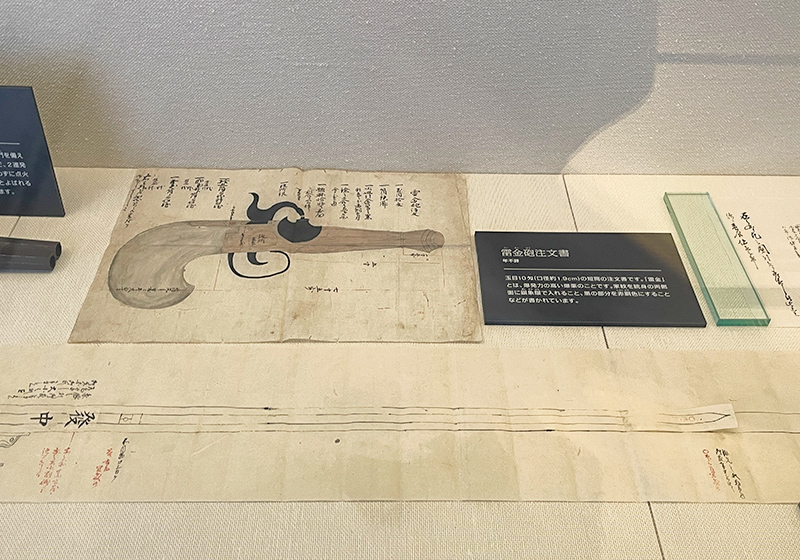
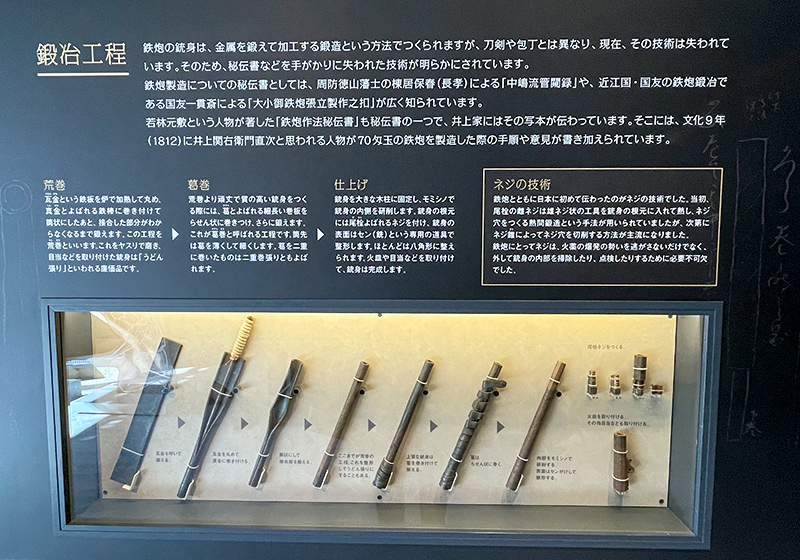
Another is that we are now learning about the lost art of gunsmithing.
In fact, the method of manufacturing Hinawaju was not handed down to the present day.
However, in recent years, over 20,000 old documents and other materials related to Hinawaju production have been found in the Inoue family!
These documents are among the best in Japan in terms of both quality and quantity regarding Japanese gun production. And as a result of the joint research initiated by Sakai City and Kansai University, they have been made publicly available.
If you are interested in Japanese history, you should definitely go there. Sakai City also has many other attractions such as ancient tombs and knife technology!
Come and visit!
